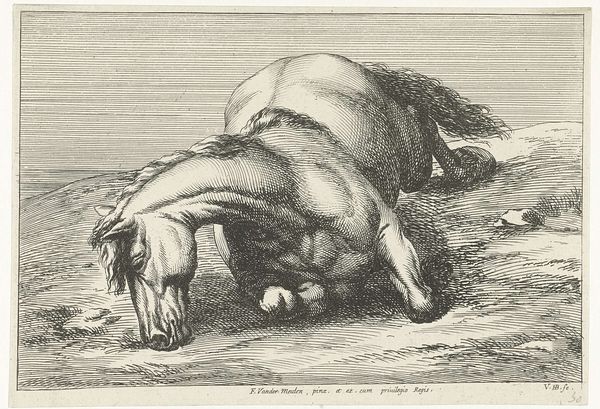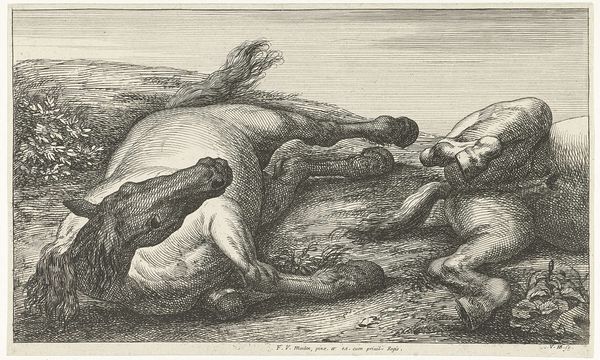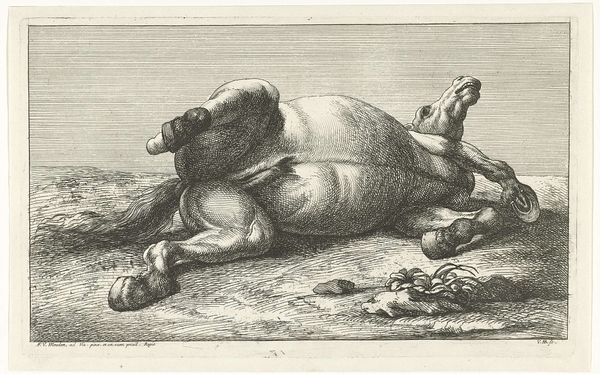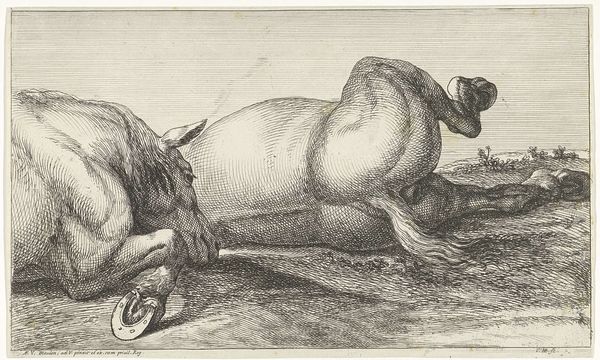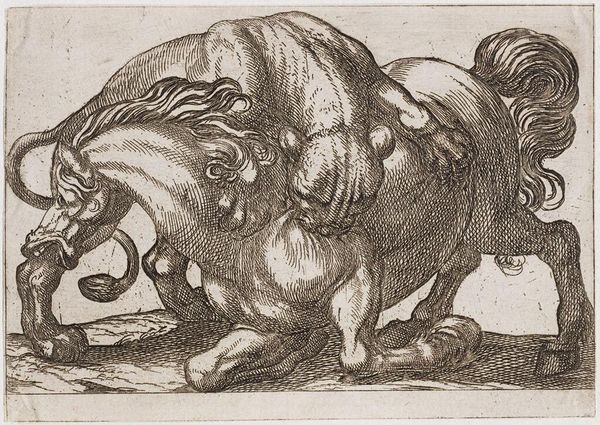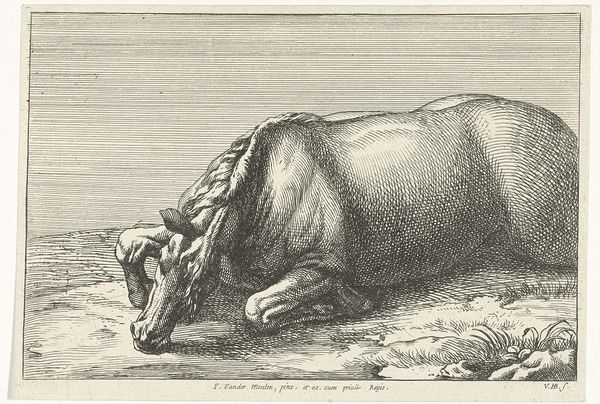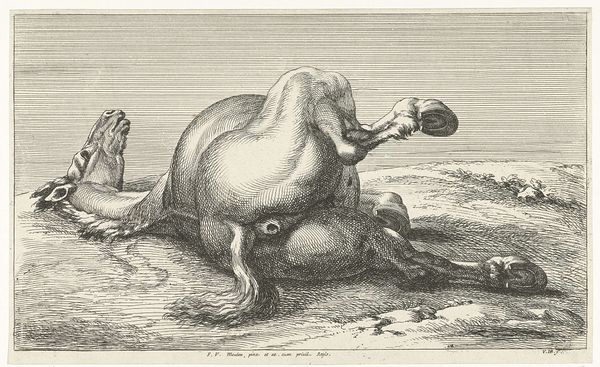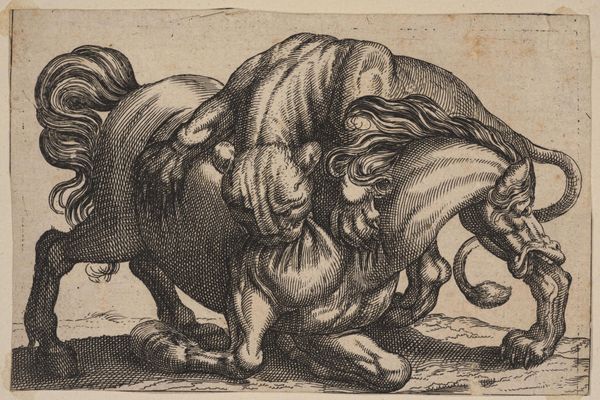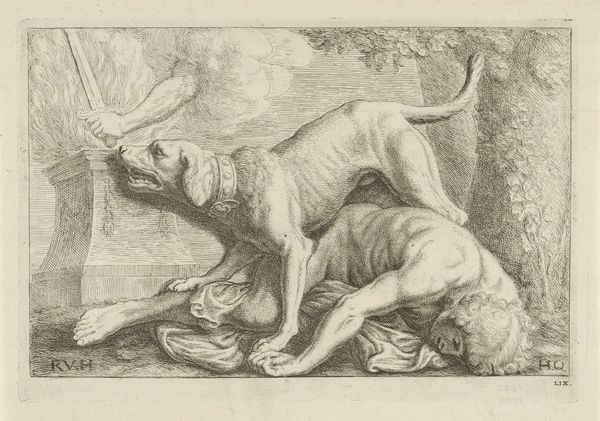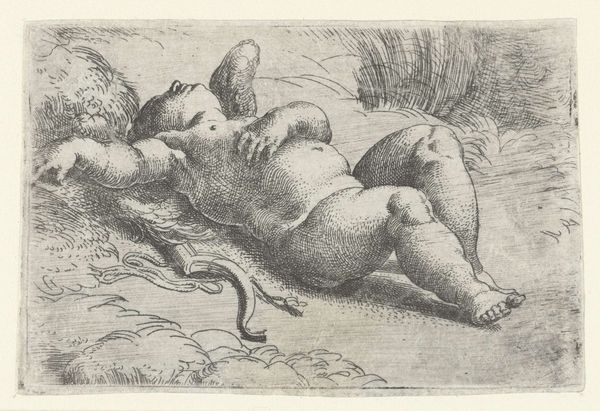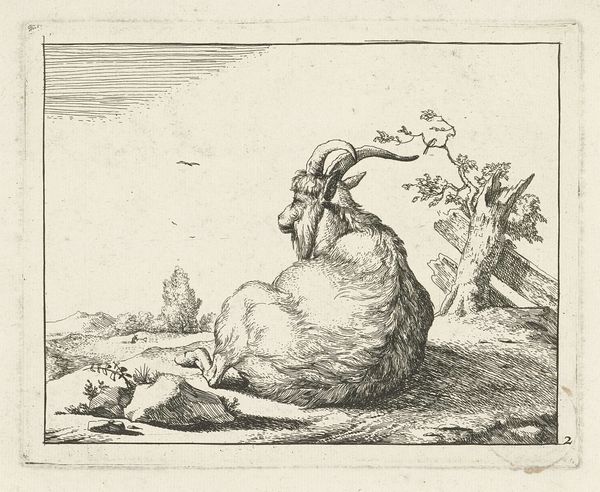
Twee gesneuvelde paarden waarvan de rechter van de zijkant gezien 1674 - 1733
0:00
0:00
janvanhuchtenburg
Rijksmuseum
print, engraving
#
baroque
#
animal
# print
#
landscape
#
engraving
Dimensions: height 202 mm, width 336 mm
Copyright: Rijks Museum: Open Domain
Curator: This print, dating roughly from 1674 to 1733, is titled "Twee gesneuvelde paarden waarvan de rechter van de zijkant gezien," or "Two Fallen Horses, the Right Seen From the Side." The artist is Jan van Huchtenburg, and it’s currently held at the Rijksmuseum. Editor: It's undeniably stark, this portrayal of fallen horses. There's a heavy weight to it. The detail in the rendering of their musculature, even in death, is almost unsettling. It highlights a kind of labor—the terrible labor of war, etched right into their very forms. Curator: Exactly. Huchtenburg was known for his battle scenes. So, this isn’t just a depiction of dead animals; it speaks to the brutality of warfare in the Baroque period, the impact on all participants. He captures the cost that military campaigns imposed. Editor: I see it also in the meticulous execution of the print itself – the labour and artistry embedded in representing such a brutal subject. Engraving demanded time and skill. The contrast almost highlights the ease with which lives are taken versus the care with which it is rendered. Curator: The choice of medium matters, definitely. Prints allowed for wider distribution. Consider the impact of repeatedly confronting this image: society becoming more aware and exposed to the realities of war. Editor: Yes, a point that it's reproduced en masse alters the equation; turning it into a commodity too, doesn't it? Something to be collected, circulated – mediating how the war is considered. Curator: Interesting. It encourages consideration of the political landscape. These images helped formulate public sentiment. How do we rally troops, and what exactly are we asking these men, and beasts, to sacrifice? Editor: Perhaps Huchtenburg himself sought to expose the truth of war and question who bore the ultimate cost and for whose benefit? In a time devoid of today's instant media, engravings shaped opinion with a lasting materiality. Curator: Indeed, this image reminds us how art functions within specific political and cultural moments, reflecting both the glory and the tragedy. Editor: And how the making of that art—the choices of medium, the distribution methods—deeply shapes the cultural understanding. Curator: Absolutely. Looking closer, the print is rich with detail about warfare that serves as a silent, sombre account that challenges viewers still today. Editor: I think I'll carry with me this awareness of not only war's visual language and implications but the very labour embedded in creating an image itself.
Comments
No comments
Be the first to comment and join the conversation on the ultimate creative platform.
